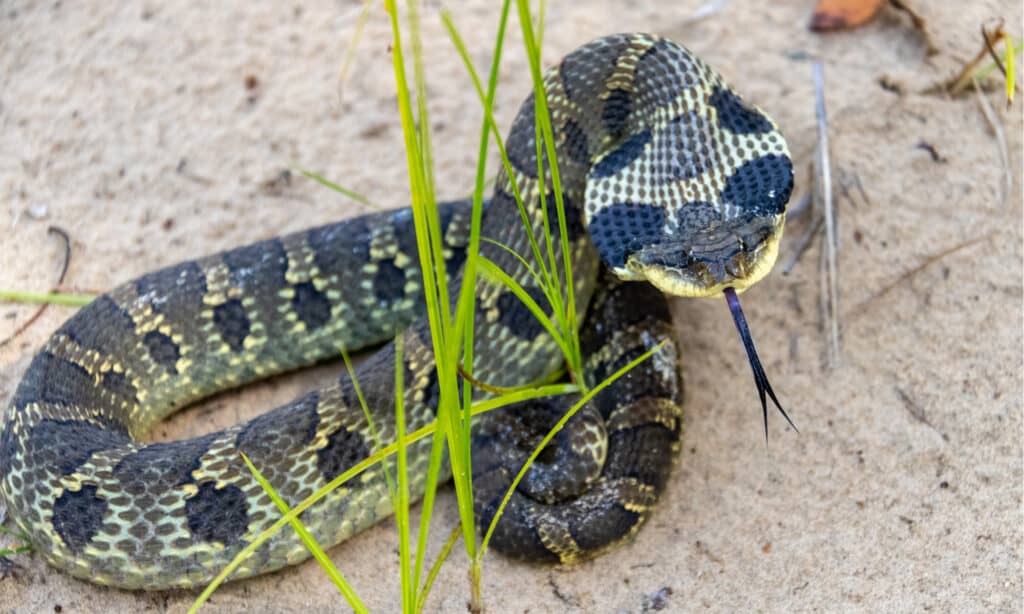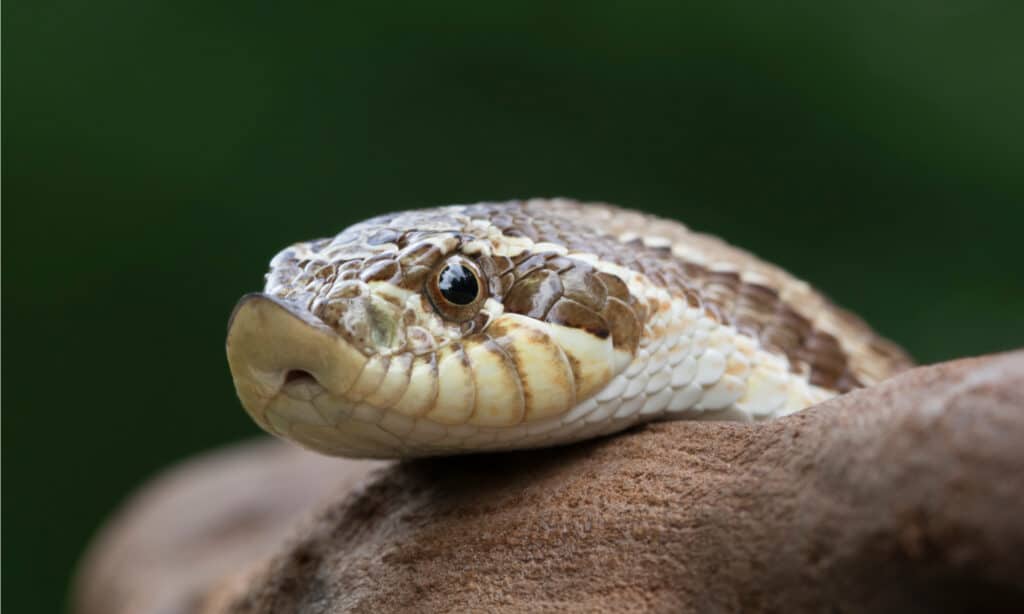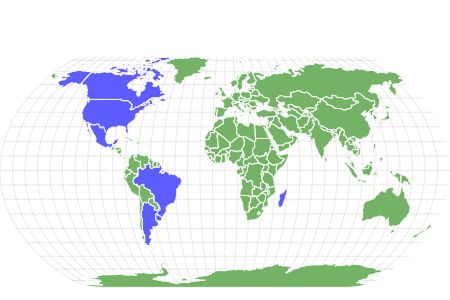Hognose snake
.jumbotron {
background-image: url(“https://a-z-animals.com/media/2022/04/Hognose-Snake-header-400×300.jpg”);
}
}
@media only screen and (min-width: 641px) and (max-width: 920px) {
.jumbotron {
background-image: url(“https://a-z-animals.com/media/2022/04/Hognose-Snake-header-470×370.jpg”);
}
}
@media only screen and (min-width: 921px) {
.jumbotron {
background-image: url(“https://a-z-animals.com/media/2022/04/Hognose-Snake-header.jpg”);
}
}
Hognose snake
Prima Donnas of the Snake World
Hognose snake Scientific Classification
Read our Complete Guide to Classification of Animals.
Hognose snake Conservation Status
Hognose snake Facts
This post may contain affiliate links to our partners like Chewy, Amazon, and others. Purchasing through these helps us further the A-Z Animals mission to educate about the world’s species..

Discover alligator-eating snakes, spiders larger than your phone, and 1000 more incredible animals in our daily FREE email.
.photo-gallery {
–margin: 0px auto 0px;
–padding: 0px 0px 0px 0px;
}
.gallery-link {
background-image: url(“https://a-z-animals.com/media/2022/04/Hognose-Snake-header-1024×614.jpg”);
background-repeat: no-repeat;
background-size: cover;
background-position: center;
height: 500px;
justify-content: center;
text-align: center;
align-items: center;
display: flex;
border: 2px solid #000;
}
.gallery-link img {
height: 50%;
}
@media only screen and (max-width: 768px) {
.gallery-link {
height: 300px !important;
}
}
View all of the Hognose snake images!
“Prima Donnas of the Snake World”
When a hognose snake feels threatened, it doesn’t just slink off and hopes a would-be attacker won’t notice. It puffs up, flattens its neck like a pancake, raises its head like a cobra, hisses then feigns an attack, though it rarely bites. If this doesn’t work, it’ll roll over and play dead and will insist on playing dead until the threat goes away. It also has a nose like a pig’s. Read on for more information about this captivating reptile.
Five Amazing Facts About Hognose Snakes
Here are five amazing facts concerning hognose snakes.
button.pulse {
transform: scale(1); animation: pulse 2s infinite;
box-shadow: 0 0 0 0 rgba(11, 247, 25, 1);
}
@keyframes pulse {
0% { transform: scale(0.90); box-shadow: 0 0 0 0 rgba(11, 247, 25, 0.5); }
60% { transform: scale(1); box-shadow: 0 0 0 15px rgba(11, 247, 25, 0); }
100% { transform: scale(0.90); box-shadow: 0 0 0 0 rgba(11, 247, 25, 0); }
}
- Not all hognose snakes are closely related. Some are in the Colubridae family and others are in the Lamprophiidae family.
- The skeleton of the blonde hognose snake of Madagascar contains apatite, a mineral found in metamorphic and igneous rocks.
- Heterodon snakes are careful about where they lay their eggs since temperature affects the health of the hatchlings. Hatchlings from eggs laid in warmer areas tend to be bigger and healthier.
- Leioheterodon snakes are only found in Madagascar.
- Hognose snakes aren’t the best at playing dead. If you flip one over while it pretends to be dead, it will flip back.
Where To Find Hognose Snakes
New World hognose snakes are found in Canada and the United States. The western hognose snake, Heterodon nasicus is found from the south of Canada to as far south as northern Mexico and prefers plains, prairies, and grasslands. The eastern hognose snake prefers dry and sandy habitats that make burrowing easier and is found from Minnesota, north to southern Ontario, south to the south of Florida and Texas, and east to New Hampshire.
The Mexican hognose snake is found from the south of Texas into northern Mexico. Some biologists consider it a subspecies of the western hognose snake. The southern hognose stake is found from the coastal plains of North Carolina, south to Florida, and as far west as Mississippi. It prefers dry flood plains and open and sandy locations where it is easy to dig.
Lystrophis hognose snakes are found in South American countries of Brazil, Paraguay, Uruguay, and Argentina. Their pattern of black, white, and red bands allows them to mimic the dangerous coral snakes. The genus of these snakes is also known as Xenodon.
Leioheterodon snakes are found in such areas in Madagascar as Nosy Be and the Comoros Islands.
Hognose Snake Scientific Name
Hognose snakes have several scientific names. Heterodon means “different tooth,” and comes from the Greek words for “different,” which is hetero, and “tooth” which is odontús. Leioheterodon adds the Greek word leios, which gives the meaning of “smooth different tooth.” Lystrophis means something like “shovel snake” and refers to the snake’s modified snout, which evolved for digging. Lystros is Greek for “shovel” and óphis is Greek for “serpent.” Xenodon means “strange tooth.” Only the western hognose snake has subspecies. They are:
- Heterodon nasicus gloydi
- H. n. kennerlyi
- H. n. nasicus
How To Identify Hognose Snake: Appearance and Description
Though hognose snakes vary in size and in the patterns and colors of their scales that ranging from glossy black to albino, what they do have in common is their upturned snout. This snout helps the snake dig through sand and humus. Other than this, they grow from around a foot to 5.9 feet in length and often have robust bodies. They are found in places with dry, sandy soil, though the snakes that prefer amphibians as food may live in wetlands.
Hognose Snake Snout
The diagnostic snout of the hognose snake gets its name because it is upturned and looks like the snout of a hog. Technically, the unusual snout is a turned-up rostral scale. To dig they sweep their snouts from side to side. The snakes dig to find prey, travel underground, and find burrows in which to hibernate.
Types of Hognose Snakes
Types of hognose snakes can sometimes be told by where they live, though the range of some species overlaps. The western hognose snake is found from southern Canada into Mexico in largely dry areas, and its conservation status is least concern. Its subspecies are Gloyd’s hognose snake, the Mexican hognose snake, and the Plains hognose snake. Gloyd’s hognose snake is found from Kansas and down to the southern Rio Grande Valley, while the Mexican hognose snake is found in Mexico and north into southeastern Arizona and the southwestern part of New Mexico. The Plains hognose snake is found in New Mexico, Oklahoma, the Texas panhandle, and as far north as Saskatchewan and Manitoba.
The eastern hognose snake is found from Minnesota to Florida and is called the spreading adder for its ability to flatten and raise its neck, cobra-like if it feels threatened. It can come in a variety of patterns, from black to mottled gray and brown. It eats toads almost exclusively and seems to be immune to their toxins. Its conservation status is least concern, and it has no subspecies.
The southern hognose snake also has no subspecies, but its conservation status is listed as vulnerable. Its snout is noticeably upturned, and it has keeled scales in the middle of its body whose colors can range from red to yellow to light brown with dark blotches. It’s found from North Carolina to Florida and Mississippi.
Lystrophis hognose snakes are found in South America and mimic the venomous coral snakes found there, though they are nonvenomous. Leioheterodon hognose snakes are endemic to Madagascar. This includes one of the largest of the hognose snakes, the Malagasy giant hognose snake. This snake can grow close to 6 feet in length.
Hognose Snake Pictures

IHX/Shutterstock.com

Chase D’animulls/Shutterstock.com

Mark_Kostich/Shutterstock.com
Hognose Snake Venom: How Dangerous Are They?
Most hognose snakes are nonvenomous. Indeed, some biologists believe that all of the hognose snake species are basically nonvenomous. What’s intriguing is that members of the Heterodon genus appear to have saliva that is a bit toxic, and members of the Xenodon genus produce actual venom. The toxins are enough to immobilize the snake’s prey, but they cause only mild symptoms in humans.
Hognose Snake Behavior and Humans
Hognose snakes are notorious for their dramatic displays when they are threatened. They flatten their necks while lifting their heads to mimic a cobra. They hiss and pretend to strike, even though they rarely bite. If this doesn’t work, the snake resorts to playing dead. It rolls over on its back, stops breathing, and lets its forked tongue dangling out of its mouth. It may evacuate its bowels. If you try to flip the snake over while it’s playing dead, it will just roll over on its back again. The Lystrophis snakes protect themselves even further by imitating venomous coral snakes through their red, black, and white coloration, though they also put on an impressive defensive display.
Hognose snakes eat lizards, rodents, amphibians, and the eggs of snakes and lizards. The giant hognose snake will even take tenrecs and lemurs.
Hognose snakes also brumate or hibernate, and it is important for people who keep these snakes as pets to reproduce these conditions in the snake’s environment if they’re interested in having the snakes reproduce. If these conditions are met, hognose snakes breed fairly easily in captivity. They are oviparous, and the female Xenodon lays five to nine eggs about five weeks after she mates. In the right conditions, they hatch after 105 to 110 days. The eggs of a Heterodon hognose snake hatches after about 60 to 75 days, and a Leioheterodon snake’s eggs hatch two months after they are laid if the temperature is kept at around 85 degrees.
These snakes are beneficial to humans because they eat vermin, and their venom or toxins, if they have any, are not life-threatening.
View all 72 animals that start with H
Hognose snake FAQs (Frequently Asked Questions)
How poisonous is a hognose snake?
How poisonous a hognose snake is, depends on its species. Overall, no hognose snake is so poisonous or venomous that the bitten person needs hospital care.
Is a hognose snake a good pet?
Hognose snakes make good pets. They are attractive, amusing, and easy to take care of. There is a brisk pet trade in the Heterodon and Lystrophis/Xenodon genera, and they come in a variety of morphs, from jewel-colored to albino. Leioheterodon snakes are becoming more popular, though the size of these snakes makes keeping them a bit of a challenge.
Can a hognose snake hurt you?
Hognose snakes probably couldn’t hurt you. They don’t like to bite, and even when they do bite the symptoms are minor or nonexistent.
What happens if a hognose snake bites you?
If one of these snakes bites you, the area might swell up, redden and itch for a while. Some people have no symptoms at all.
Where are hognose snakes found?
Heterodon snakes are found in North America, Lystrophis snakes are found in South America and Leioheterodon snakes are only found in Madagascar.
How big are hognose snakes?
These snakes range in size from 1 to over 5 feet in length.
What are the differences between hognose snakes and cottonmouths?
The key difference between the cottonmouth and hognose snake is that the cottonmouth is highly venomous, whereas the hognose snake is only dangerous to toads.
Check out other differences here!
Sources
- Wikipedia, Available here: https://en.wikipedia.org/wiki/Hognose
- The Reptile Database, Available here: https://reptile-database.reptarium.cz/species?genus=Xenodon&species=dorbignyi
- Clarion Ledger, Available here: https://www.clarionledger.com/story/sports/outdoors/2019/09/27/hognose-snakes-funny-comical-play-dead-mississippi/2429711001/
- The Spruce Pets, Available here: https://www.thesprucepets.com/hognose-snakes-1238131
- Herpetoculture Magazine, Available here: https://herpetoculturemagazine.com/captive-husbandry-of-xenodon-pulcher/
- That Pet Place, Available here: http://blogs.thatpetplace.com/thatreptileblog/2014/08/08/hognose-snake-breeding-and-care-for-the-madagascar-giant/#.YmwWsuhBy3B
















